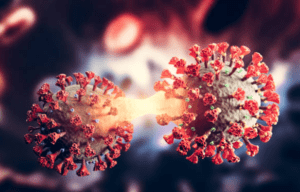
In recent weeks, COVID has once again made headlines in India because two new variants have been found, named NB.1.8.1 and LF.7. These COVID variants were recently detected in some states like Tamil Nadu and Gujarat. This was monitored by the health authorities as they watched the rising cases across several states. These variants are observed closely to see if they are more dangerous or likely to spread.
Although there are many people who still though that COVID-19 is not a severe issue these days, they are proven wrong; the appearance of these COVID variants serves as a reminder that the pandemic’s footprint is still there. That’s why the most important thing to do is to protect yourself, stay informed, and take basic precautions if needed.
In this blog, we’ll discuss all the major questions that arise in people’s minds, what the implications of these new COVID variants are, what precautions are essential for people’s safety, how they spread, what the symptoms are, and how they differ from old variants.
This blog also tells you about NB.1.8.1 and LF.7—two of the latest COVID variants—including all the important factors. Should you be worried? Read on to find out.
Detection and Spread of NB.1.8.1 and LF.7 in India

Recently, there are some new COVID variants have been found in India. NB.1.8.1 and LF.7 subvariant are the two new variants . Most of the states have faced these variants in their states, like Tamil Nadu, in April 2025. After a few weeks, 4 people were also found with the LF.7 subvariant in Gujarat. These are newer forms of the COVID-19 virus
One case of the NB.1.8.1 subvariant was found in Tamil Nadu in April 2025. A few weeks later, four people were found with the LF.7 subvariant in Gujarat. These new forms were found through testing and checking the virus in labs.
Both the NB.1.8.1 and LF.7 subvariants come from an earlier COVID-19 variant called JN.1, which had spread in many countries. These new variants are being watched by doctors and scientists to take careful measures regarding this issue.
Apart from these states, places like Delhi, Maharashtra, and Kerala have also seen a small rise in COVID cases.
Symptoms and Severity
• The new COVID variants found in India — NB.1.8.1 and LF.7 — are showing mild symptoms and are similar to regular viral infections.
• Most people who catch these COVID variants are feeling like they have a normal cold or viral fever.
• According to the latest updates from doctors and health officials tracking India COVID-19 cases, most people infected with these COVID variants have not experienced serious infection in most cases.
Common symptoms of the new COVID variants include:
• Sore throat
• Cough (usually dry or mild)
• Runny or blocked nose
• Tiredness and body aches
• Low-grade fever
• Some people also get headaches, mild breathing discomfort, or mild stomach issues, but these are less common or rare.
• These symptoms are very similar to regular flu or viral fever
• Health experts have confirmed that the NB.1.8.1 and LF.7 COVID variants are not causing severe symptoms.
Should You Be Worried?

With the rise of new COVID variants in India like NB.1.8.1 and LF.7, many people are worried if it’s time to worry again. The simple answer is — not right now, but stay careful.
• At present, the COVID cases in India have gone up a little, but the number is still much lower than during earlier COVID waves.
• Most are the people testing positive for these COVID variants are showing mild symptoms like a cold or fever.
• Most of the people testing positive for these COVID-19 variants are showing mild or no symptoms, and hospitalization is rare.
• According to official India COVID-19 data, the new subvariants are not as harmful as the old variant, but precautions need to be taken.
What Experts Say:
• Viruses like COVID-19 keep changing over time — this is normal.
• So far, there is no strong evidence that NB.1.8.1 and LF.7 variants cause serious illnesses in most people.
• People who are vaccinated or have already recovered from COVID-19 are generally safe from severe symptoms.
Who Should Be More Careful:
• Elderly people
• People with heart, lung, or diabetes problems
• People with a weak immune system
If you’re in one of these groups, you should be advised to take these precautions
• Wear a mask in crowded places
• Keep washing your hands
• Avoid close contact with people who are sick
So, while the new COVID variants should be taken seriously, there’s no need to panic. Just stay informed, follow basic safety tips, and keep an eye on trusted updates about COVID-19 cases in India.
Precautions and Public Response

As new COVID variants like NB.1.8.1 and LF.7 are found in India, people are being advised to be careful, even if the situation is not worse yet.
What precautions should you take?
• Wear a mask if you’re going to a crowded place like a market, mall, or public transport— especially if you’re older or have health issues.
• Wash your hands often with soap or use hand sanitizer.
• Stay home if you feel sick — even if it seems like a simple cold or fever.
• Get vaccinated and keep your booster shots updated if eligible.
• Avoid close contact with people who are coughing, sneezing, or showing signs of COVID.
How are people and the government responding?
• So far, COVID-19 cases in India are low, so there are no lockdowns or restrictions.
• The government is watching the situation closely and checking for changes in the COVID variants through lab testing.
• So far, there is no need for new restrictions because the COVID cases are still low.
• Most people are going on with their daily lives, but some are being more cautious, especially in places like airports, hospitals, and crowded markets.




